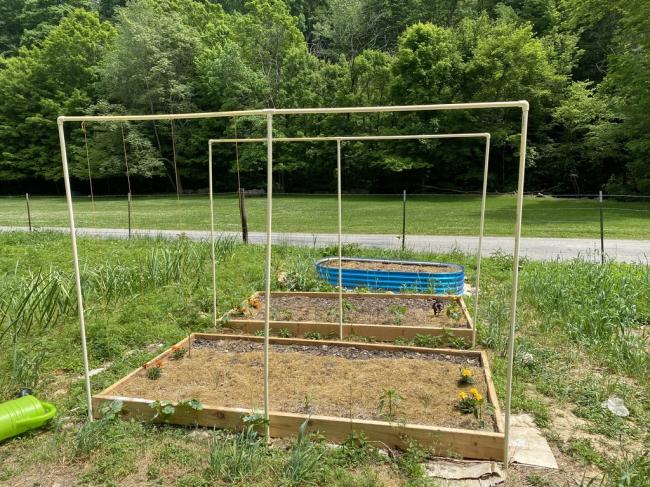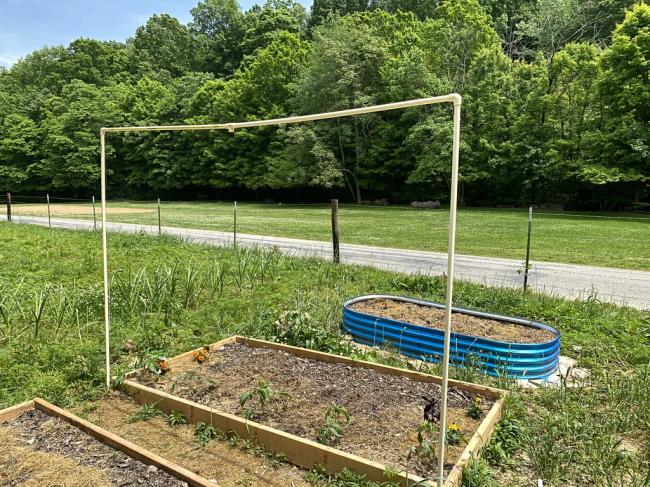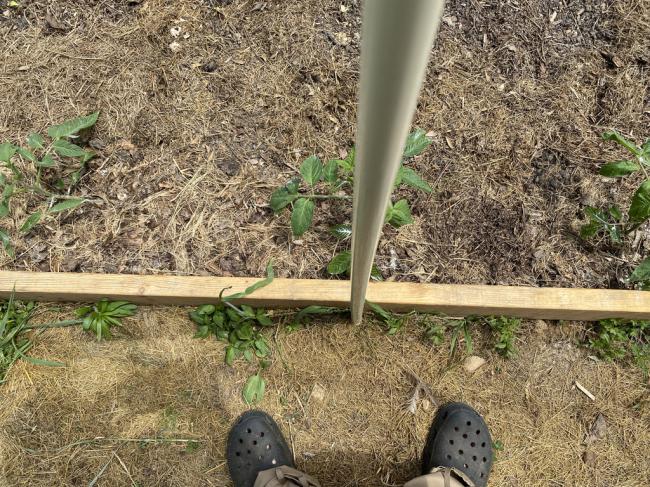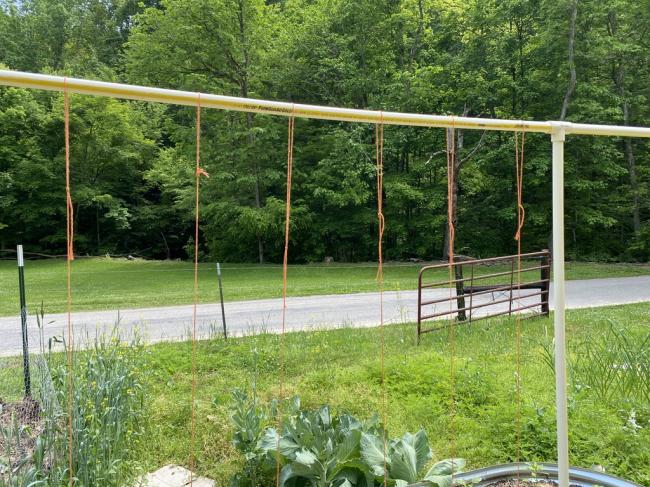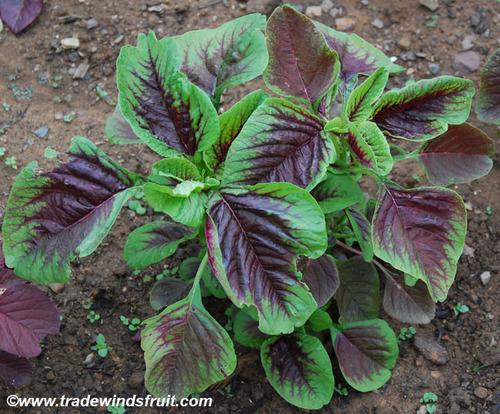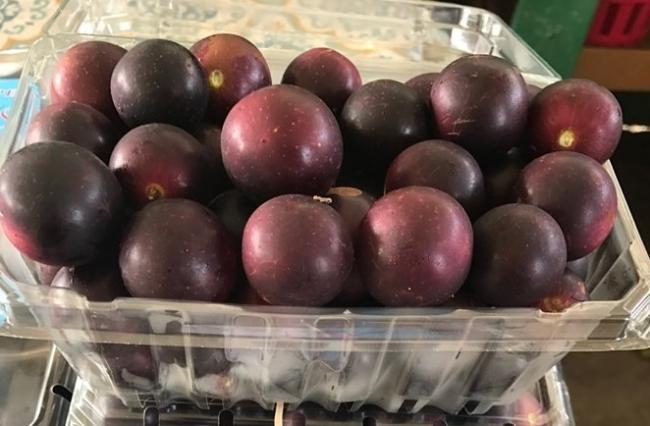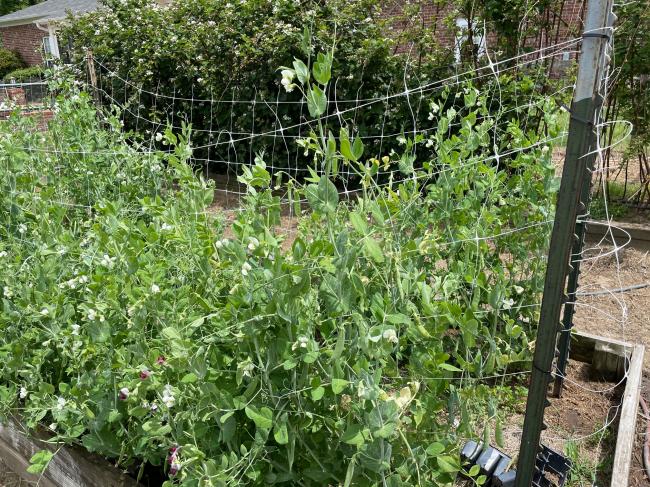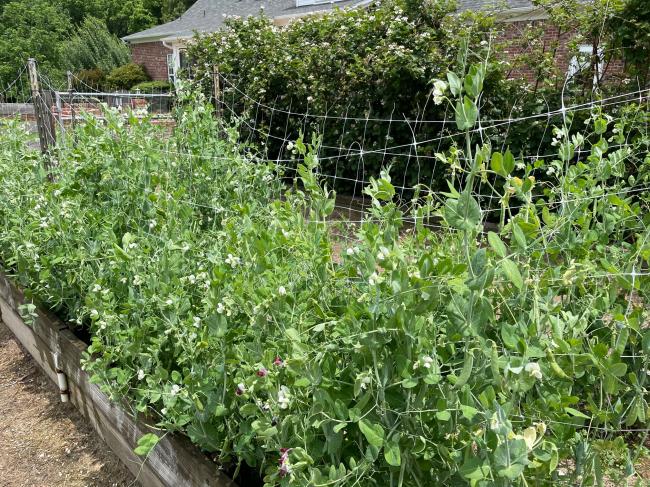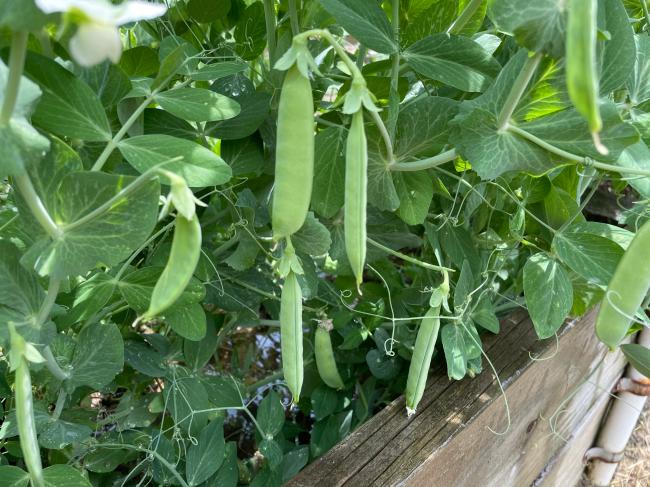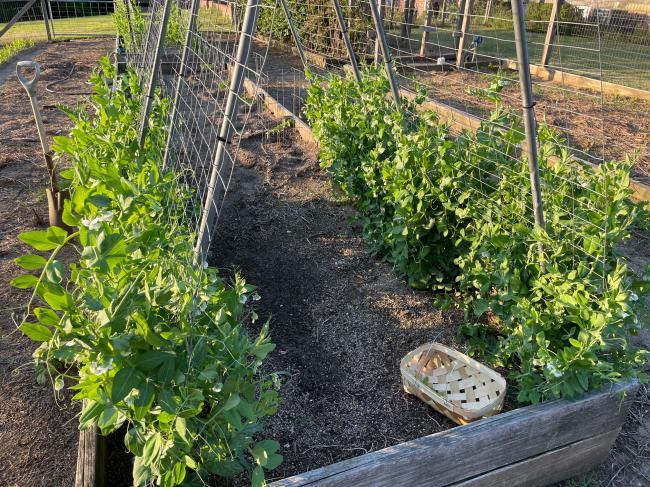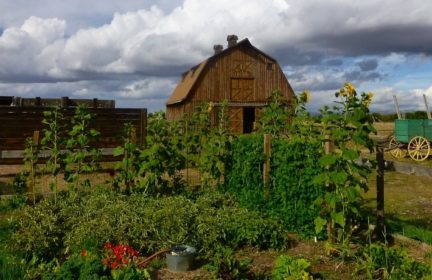Easy raised bed trellis
Trellises are essential when growing vining plants like indeterminate tomatoes and pole beans. And they can help you maximize limited garden space. Here’s how to make an easy trellis for your raised beds.
For each eight-foot long raised bed you’ll need:
- Three ten-foot lengths of 3/4-inch PVC
- Two 3/4″ elbow connectors and one t connector
- Three 18-inch lengths of 1/2-inch rebar
- String
- Screws or sticks (thin bamboo works great)
Note: You can use PVC or CPVC, but just make sure you don’t mix them, because they’re measured in different ways. CPVC couplings won’t fit on PVC and vice versa. PVC is also an endocrine disruptor, so if you’re worried about that, you can use metal electrical conduit instead.
You’ll also need a hammer or mallet to drive in the rebar.
You want to keep your trellises on the north side of your bed to keep from shading out other crops. Start by pounding in two pieces of rebar on each end of the north side of your bed. I drive in the rebar so it doesn’t stick out above the garden bed, so I can sit on the edge without getting poked.
Take the three lengths of PVC and cut off four-foot lengths from each one. You should end up with three six-foot lengths and three four-foot lengths. You can set one of the four-foot lengths aside.
Place two of the six-foot lengths over the rebar. They should stand upright. Put the elbow connectors on top, insert the four-foot lengths, and connect them with a t-connector. Then insert the third six-foot length in the bottom of the t-connector.
You need to drive in one last piece of rebar. Figure out where the middle posts sits, drive a piece of rebar there, and slip the piece of PVC over it.
Now you just need to tie some strings for plants to climb. If the bed is wood, put a screw in front of each plant to support, tie a string to it with a simple double knot, and then attach it to the top of the trellis with an adjustable hitch knot. Tighten it up to add some tension to the line. This is a good opportunity to practice your knot tying.
For metal beds, I just take foot-long lengths of bamboo, shove them into the ground by the plant, and tie to that. If the string slips off, I use the saw on my Leatherman to cut a notch in the bamboo to hold the string in place.
Pros: Cheap, quick to set up, you can reach between the strings for weeding and watering, nothing for the wind to catch
Cons: PVC is nasty, tying the knots can be time-consuming
-
Comments (26)
-
